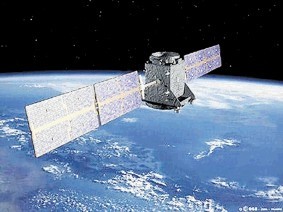
Getech has begun an industry-funded research study to enhance the resolution of satellite-derived gravity data used in the search for hydrocarbon-bearing structures under the world’s oceans and seas.
The company’s nine-month R&D study is designed to determine how, and to what degree, the advanced ocean measurements from the three cycle polar geodetic mission (2011-13) of the CryoSat-2 satellite (with data provided by the European Space Agency) can improve the accuracy, resolution, and reliability of satellite-derived gravity.
The success of the R&D study will pave the way for a global study by Getech, beginning in early 2013, to map all the world’s continental margins out to 500km from the shore lines.
This global study will include data from the NASA Jason-1 oceanographic satellite, subject to it going into geodetic mission mode in 2013.
One year of data from CryoSat-2 will provide about 50% additional data on top of that available from previous satellite missions.
The near-polar orbit will generate tracks with different orientations that will infill existing data coverage.
Getech, which grew out of a Leeds University research group in the 1980s and became a public company in 2005, says that its specialized processing methodology will be particularly suitable for extracting high resolution gravity data from this combined data set.
In addition, CryoSat-2 is acquiring data with a new SAR (synthetic aperture radar) system, which promises improved accuracy over some key areas of the world.
The company currently offers what is claimed to be the world leading Trident gravity solution, which combines the two leading public domain satellite-derived data sets with Getech’s proprietary product.
The R&D study is expected to refine the methodologies and algorithms used previously on the GeoSat and ERS-1 data to handle the two altimeter data types being collected by CryoSat-2.
Four test areas have been agreed in the Caspian Sea, Barents Sea, north Brazil margin, and north Colombia/Venezuela margin to check on the resolution of the data by comparison with high quality terrestrial shipborne data.
This new study should open the way to making gravity data of exceptional resolution available on a global basis at an extremely attractive price compared with any other method.”